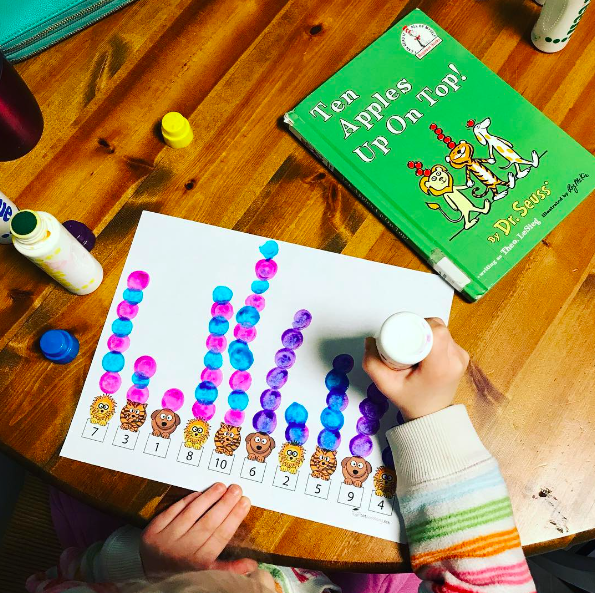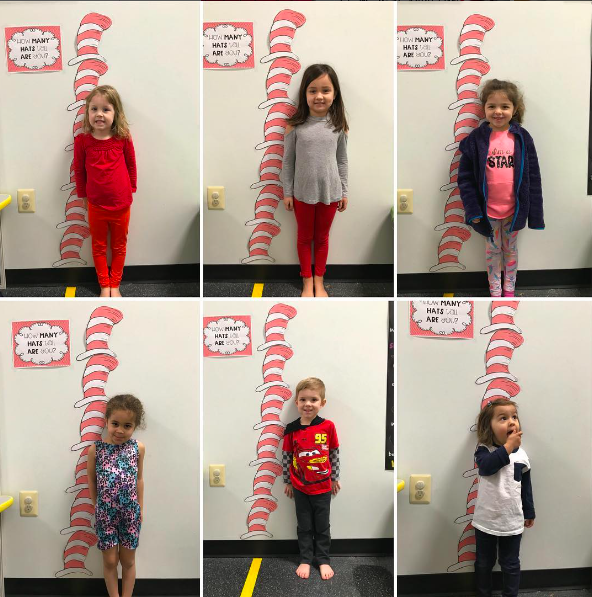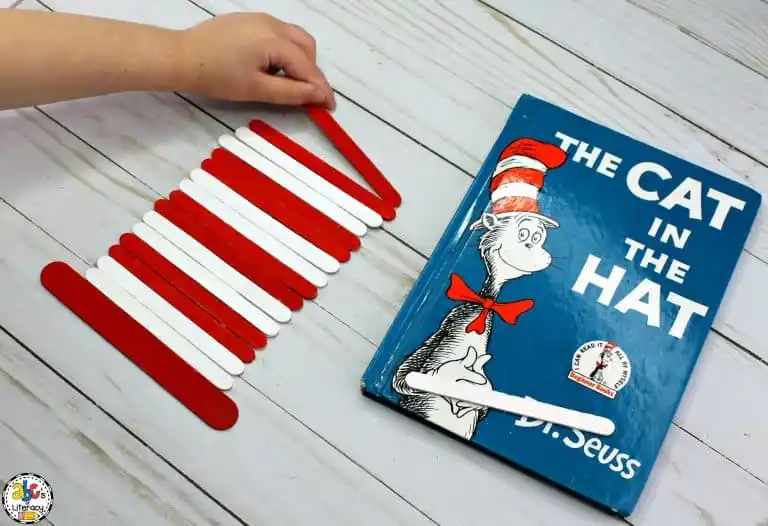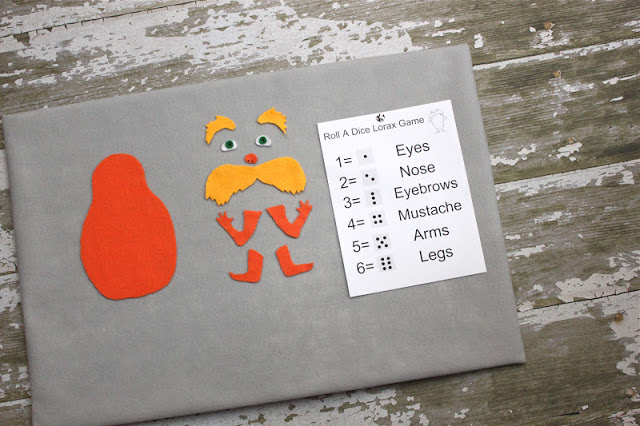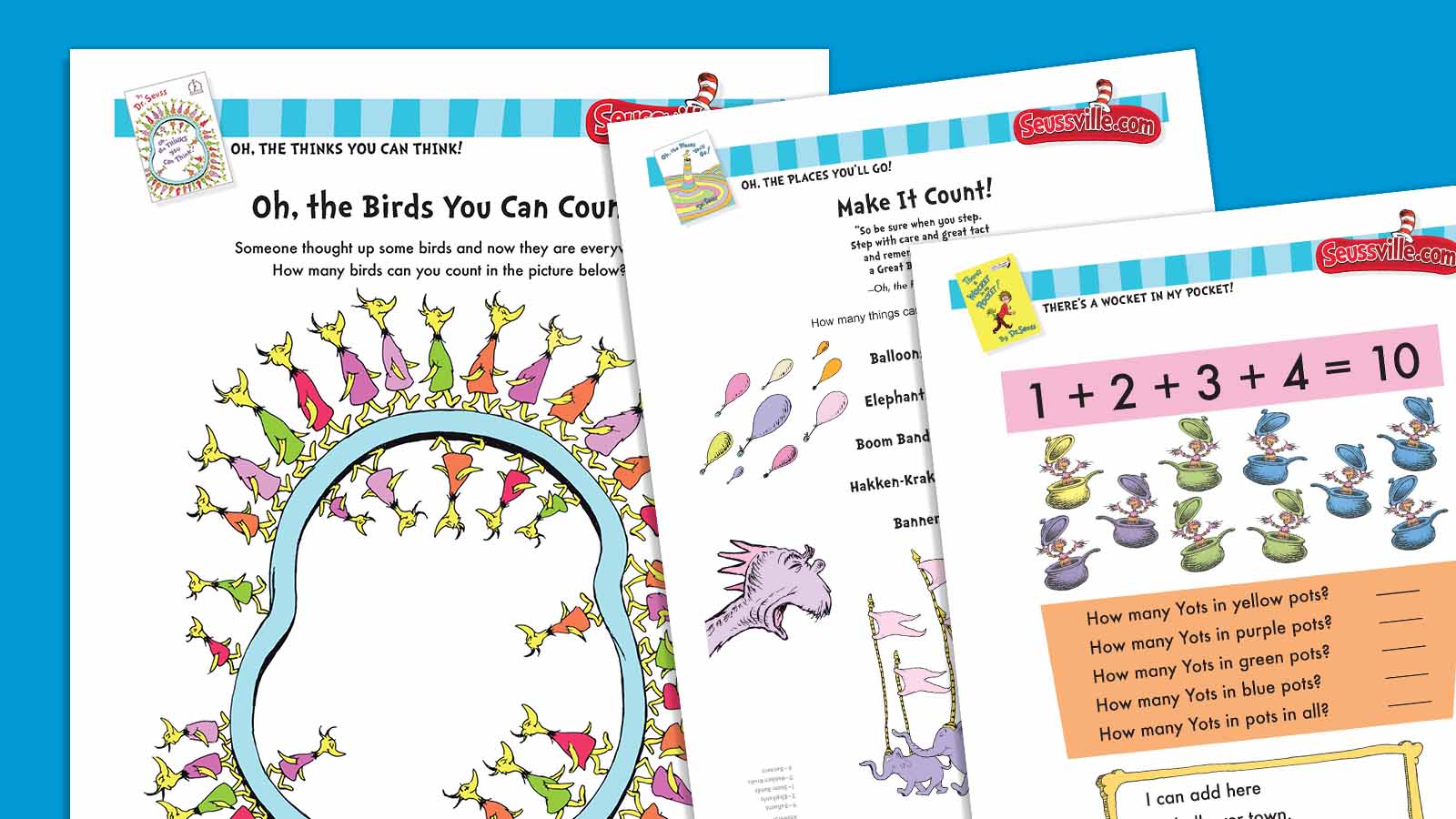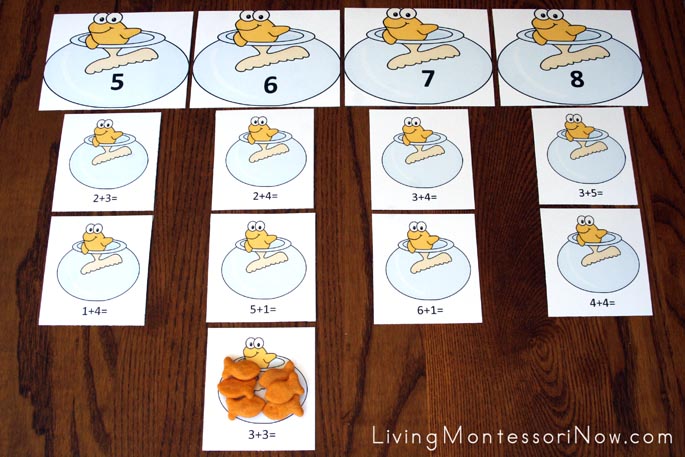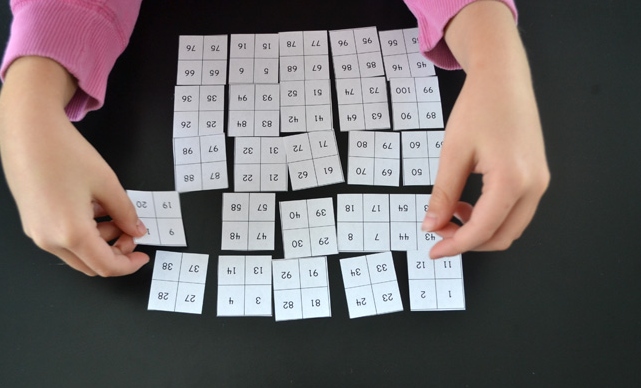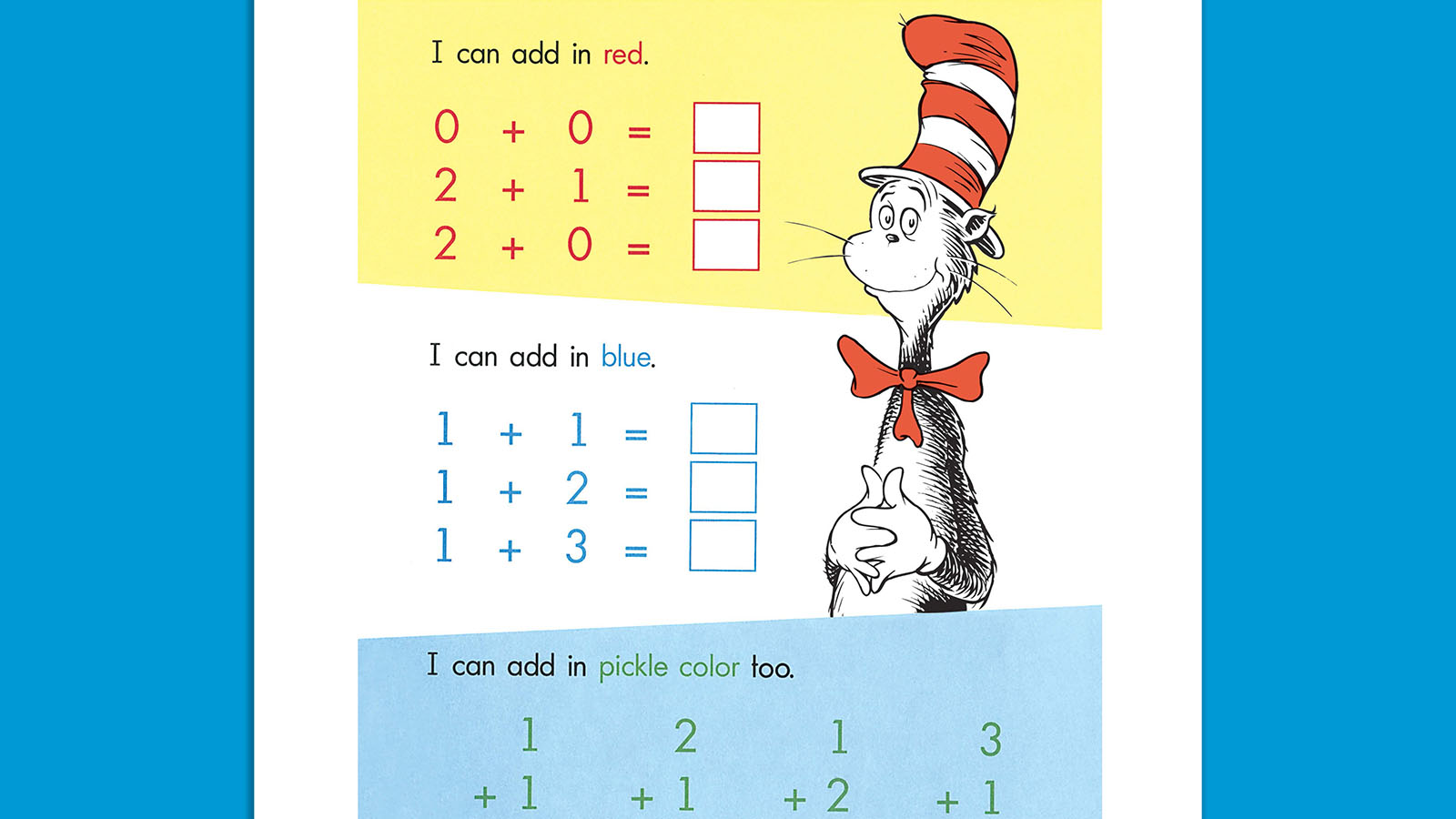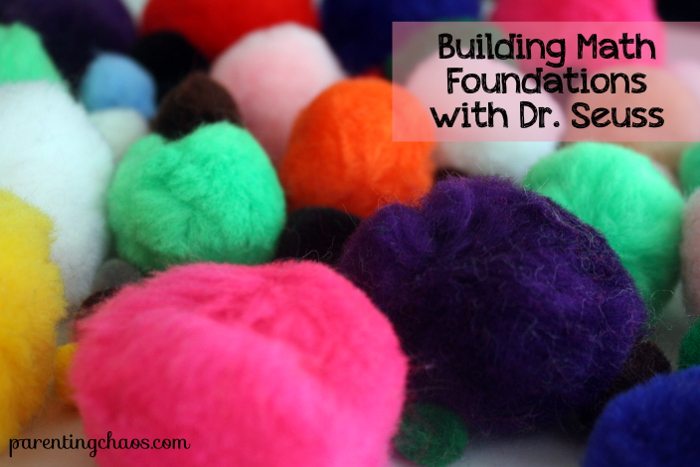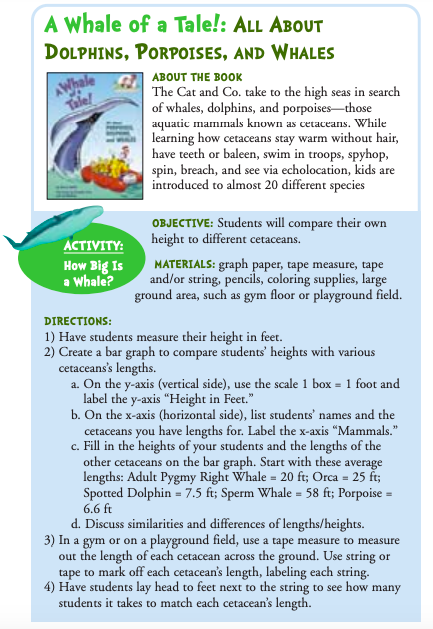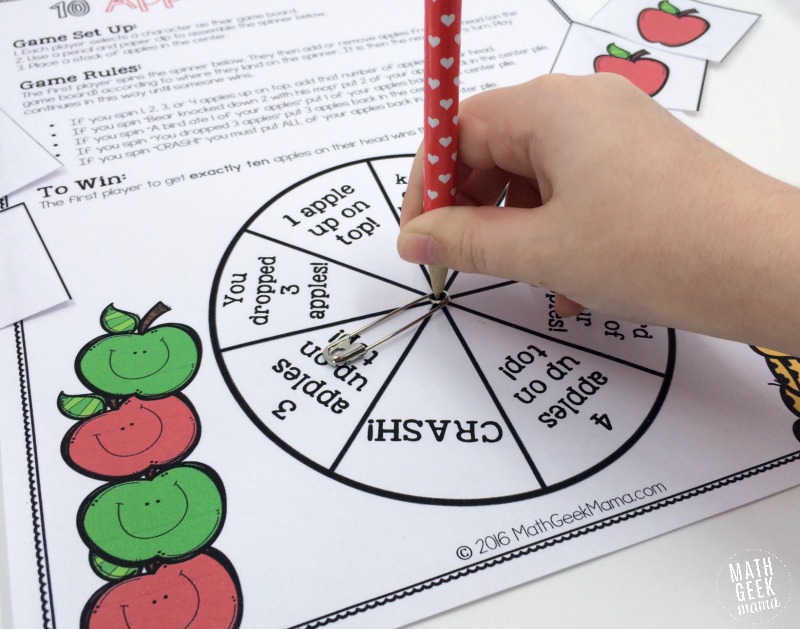Learning math skills can be intimidating for young learners. Having friends from Dr. Seuss favorites can help make building a solid mathematical foundation more fun and inviting. Take a scroll through some of our favorite Dr. Seuss math activities from teachers, bloggers, and our friends at Seussville. From counting and adding to making patterns and measuring, these activities will help your young mathematicians build the skills they need in an engaging way.
And be sure to head over to the Dr. Seuss learning hub for even more math worksheets and ideas!
1. Count with dot markers
After reading the ever-popular Ten Apples Up On Top!, students will use a dot marker to match corresponding numbers. Create your own template using boxes, illustrations, or images. Or students can draw apple shapes and write below them the number of seeds each apple should have.
Skills practiced: Number recognition, one-to-one correspondence
Learn more: New Generation Learning
2. Measure with Cat in the Hat’s hat
You know how we say a person has big shoes to fill? Well, the Cat in the Hat certainly has a big hat to fill! See how your students measure up next to a stack of hats taped to the wall. Once they step away, count how many hats (or how many stripes) they reach.
Skills practiced: Measurement, counting skills
Learn more: Kangaroo Learning
3. Pattern with craft sticks
Understanding and being able to recognize patterns is an important early math skill. Using red and white craft sticks, have your students create a model of the Cat in the Hat’s hat. Change up the pattern using one stick of each color, two sticks of each color, or one-two combinations, etc.
Skills practiced: Pattern recognition
Learn more: ABCs of Literacy
4. Use Truffula Trees to learn
Roll out some green play dough. Choose a number from the pile. Plant that number of Truffula Trees in the green play dough, counting aloud as you plant. Chop down your Truffula Trees, counting as you take them away. Choose another number and plant again.
Skills practiced: Number recognition, counting skills
Learn more: Inspiration Laboratories
5. Roll a die to create the Lorax
This fun activity is kind of like a felt-board version of Mr. Potato Head, only students will build the Lorax. Students will take turns rolling a die, counting out that number, and matching it with the body part from the game sheet. Then, they will place that specific part body on the Lorax’s body. Play goes back and forth until the first student completes their Lorax.
Skills practiced: Number recognition, counting skills
Learn more: Smashed Peas and Carrots
6. Try these fun counting activities from Seussville
It’s always fun to practice counting with familiar friends. Seussville has a whole collection of counting activities featuring the Cat in the Hat, the creatures from Oh, the Places You’ll Go!, terrific tigers, and more.
Skills practiced: Counting skills
Learn more: Seussville—Counting
7. Learn addition combinations with goldfish
Almost every number can be broken down in a number of ways. This engaging addition activity helps students explore the various combinations that make up numbers using Goldfish crackers. The best part is, when they finish their math, it’s snack time!
Skills practiced: Addition, number combinations
Learn more: Living Montessori Now
8. Play a mixed-up hundreds chart game
After reading Dr. Seuss’ Wacky Wednesday, have your students test their math skills with a wacky mixed-up hundreds chart puzzle. To create the puzzle, cut multiple hundreds charts into 4×4 squares and place them in a plastic zipper bag. For a challenge, cut out each number individually.
Skills practiced: Number recognition, counting
Learn more: Creative Family Fun
9. Add with Cat
Grab this worksheet freebie to start adding with Cat! It’s a great way to reinforce addition skills after a math lesson with a friendly character.
Skills practiced: Simple addition
Learn more: Seussville—Add With Cat
10. Do some pom-pom math
Pom-poms are such a versatile resource to use in the classroom. These math activities get their inspiration from Horton Hears a Who! and the fields of clover where he discovers his small friends. Use the pom-poms for counting, sorting, making patterns, addition, subtraction, and even making bar graphs.
Skills practiced: Foundational math skills
Learn more: Parenting Chaos
11. Contemplate the size of cetaceans
After reading the story A Whale of a Tale! All About Porpoises, Dolphins, and Whales from Cat in the Hat’s Learning Library, your students will create a bar graph comparing their height to different cetaceans. Then, head outside with your students and use string and a tape measure to measure out the length of each cetacean. Ask for student volunteers to lay down on the ground end-to-end to see how many students it takes to fill the space.
Skills practiced: Measurement, graphing
Learn more: Seussville—Learning Library Activity Guide
12. Play a math spinner game
After reading Ten Apples Up On Top!, introduce this fun math game to your students. Using the spinner on the free printable board game, students will race to stack 10 apples on their character’s head.
Skills practiced: Counting skills, addition, subtraction
Learn more: Math Geek Mama
Loving these Dr. Seuss math activities? Find tons of free printables and classroom activities to teach reading, math, SEL, and more with Dr. Seuss!
Also, check out 10 Phonics-Building Cat in the Hat Activities for Teaching and Practicing K-2 Literacy Skills.


